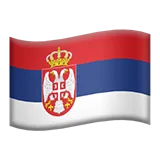We continue our series about our favorite research track for product development teams. If you missed our previous articles:
Introduction to Research in Product development
NPS Research for Product Teams
In-depth Interviews with Detractors
After you carry out an NPS research, you have access to people who are dissatisfied with your product, the detractors. They are the perfect target group for conducting in-depth interviews. We’d like to share some insights from our experience on how to make the best of interviews.
When you hold an interview, your No 1 task is to avoid researcher bias. Apart from that, you should learn not to argue with the user and to find the right words for the interview questions. Pauline Bynova, JetStyle’s CMO, has a lot of experience in conducting research and analyzing its results. She described a few of her favorite practices that make the process more efficient:
1. Develop an interview guide
Use it to highlight the core goal of the conversation. It seems obvious, but teams often forget about this.
2. And let’s take a U-turn: you can neglect the guide during the interview if needed
An interview lasts 20-40 minutes, with all introductions and goodbyes. A detailed answer takes at least 3 minutes, so you have time to discuss as much as 6-7 questions. Choose them carefully.
Your guide is a plan with suggested wording. It’s OK to retreat from it if you notice your respondent is stuck on one of the questions. It might be a signal for you to pay more attention to this topic. If a person gets very emotional, it reveals the most vulnerable spots of the customer journey.
Here’s the point where you get the most emotional feedback and insights. Getting customer insights is your goal, not completing the guide.
3. Avoid “yes/no'' and alternative questions
They frame the user’s flow of ideas, so they bring no value to the conversation.
4. Be careful with special questions
The most useful one is “Why”. It makes the user contemplate their experience. Questions starting with “How” or “What” may be too straightforward, or sound like exam tasks. Remember there are no right or wrong answers during an interview, so the questions should not be too direct.
5. Encouraging sentences are your best choice
Here are examples of how you can make questions sound more encouraging:
- Which stage of the order process in the interface caused you the most problems? vs Let's talk about how you placed your order. Recall your steps after you added the item to the cart.
- How do you report business trips in your company? vs Tell me how you usually report business trips in your company.
6. Practice your active listening
Smile, laugh and encourage your respondents. Your job is to make them feel relaxed and content. If your interviewee is tense or angry, you might as well throw the interview recording away: people won’t be honest with you when they feel like this.
7. Learn the art of pausing
It’s the best and the hardest thing to do. In live conversations, we tend to dislike pauses. It’s so natural for us to try hard to be understood, so we often repeat our questions, paraphrase, add more details, etc. If you're a researcher, it’s forbidden: just learn to pause. 5 seconds is nothing, just give your interviewee time to think.
8. Use the magic words “What else?”
Unprompted answers are the most valuable, so avoid multiple choice questions and ask your respondents to say more. Here’s an example of my dialogue with a user of a publishing service:
– Tell me how you felt when you first saw your book published in a store?
– Well, I was very happy, of course.
– I get it. What else? (pause for 2 seconds)
– Well, I was surprised; it was much easier than I imagined.
– Great, can you remember anything else? (pause for 3 seconds)
– It was great that I did it myself; I thought I would have to talk with the support all the time.
– Well, our support is excellent; you’d have nothing to worry about even if you had to. Tell me more about your emotions at that moment (pause for 5 seconds, smiling and waiting).
– I felt that a huge chapter of my life had come to an end. I’d achieved my big goal.
The first 2-3 ideas your users name come from your marketing messages. You can only use them to check if your marketing strategy works well. Pause to let your interviewee think beyond the top-of-mind concepts. After you ask “what else?”, they give you deep, subjective, and very emotional answers.
If several interviewees bring the same “subjective” ideas, it means you’ve hit the spot. You found this insightful feedback, and you can bring it straight to your team to process.
We’d love to hear about your tips that changed your research process to the better. Also, let’s talk if you need a second opinion on your research or product development flow: calendly








